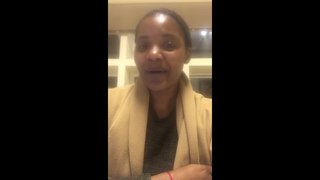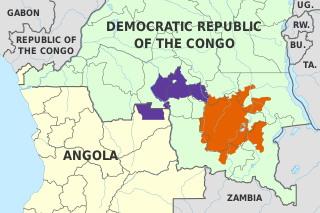Related Research Articles
Shona is a Bantu language of the Shona people of Zimbabwe. The term is variously used to collectively describe all the Central Shonic varieties or specifically Standard Shona, a variety codified in the mid-20th century. Using the broader term, the language is spoken by over 14,000,000 people.

Lozi, also known as siLozi and Rozi, is a Bantu language of the Niger–Congo language family within the Sotho–Tswana branch of Zone S (S.30), that is spoken by the Lozi people, primarily in southwestern Zambia and in surrounding countries. This language is most closely related to Northern Sotho, Tswana (Setswana), Kgalagari (SheKgalagari) and Sotho. Lozi, sometimes written as Rotse, and its dialects are spoken and understood by approximately six per cent of the population of Zambia. Silozi is the endonym as defined by the United Nations. Lozi is the exonym.
Masaba (Lumasaaba), sometimes known as Gisu (Lugisu) after one of its dialects, is a Bantu language spoken by more than two million people in East Africa. The Gisu dialect in eastern Uganda is mutually intelligible with Bukusu, spoken by ethnic Luhya in western Kenya. Masaba is the local name of Mount Elgon and the name of the son of the ancestor of the Gisu tribe. Like other Bantu languages, Lumasaba nouns are divided into several sets of noun classes. These are similar to the genders in Germanic and Romance languages, except that instead of the usual two or three, there are around eighteen different noun classes. The language has a quite complex verb morphology.
Sambaa or Shambaa or Shambala is a Bantu language of Tanzania.

Herero (Otjiherero) is a Bantu language spoken by the Herero and Mbanderu peoples in Namibia and Botswana, as well as by small communities of people in southwestern Angola. There were 250,000 speakers in these countries between 2015 and 2018.

Makhuwa is the primary Bantu language of northern Mozambique. It is spoken by four million Makua people, who live north of the Zambezi River, particularly in Nampula Province, which is virtually entirely ethnically Makua. It is the most widely spoken indigenous language of Mozambique.
The Koti language, or Ekoti, is a Bantu language spoken in Mozambique by about 100,000 people. Koti is spoken in the area surrounding Koti Island and is the major language of Angoche, the capital of the district with the same name in the province of Nampula.
Mwanga, or Namwanga (Nyamwanga), is a Bantu language spoken by the Mwanga people in the Northern Province of Zambia and in Mbeya Region, Tanzania. The 2010 Zambian census found 140,000 speakers. The current number in Tanzania is unknown; Ethnologue cites a figure from 1987 of 87,000.

Luba-Katanga, also known as Luba-Shaba and Kiluba, is a Bantu language of Central Africa. It is spoken mostly in the south-east area of the Democratic Republic of the Congo by the Luba people.
Yeyi is a Bantu language spoken by many of the approximately 50,000 Yeyi people along the Okavango River in Namibia and Botswana. Yeyi, influenced by Juu languages, is one of several Bantu languages along the Okavango with clicks. Indeed, it has the largest known inventory of clicks of any Bantu language, with dental, alveolar, palatal, and lateral articulations. Though most of its older speakers prefer Yeyi in normal conversation, it is being gradually phased out in Botswana by a popular move towards Tswana, with Yeyi only being learned by children in a few villages. Yeyi speakers in the Caprivi Strip of north-eastern Namibia, however, retain Yeyi in villages, but may also speak the regional lingua franca, Lozi.
Kwangali, or RuKwangali, is a Bantu language spoken by 85,000 people along the Kavango River in Namibia, where it is a national language, and in Angola. It is one of several Bantu languages of the Kavango which have click consonants; these are the dental clicks c and gc, along with prenasalization and aspiration.
Budu (Ɨbʉdhʉ) is a Bantu language spoken by the Budu people in the Wamba Territory in the Orientale Province of the Democratic Republic of the Congo. Its orthography uses the special characters ɨ, ʉ, ɛ and ɔ, as well as modifier letters colon ꞉ and equal sign ꞊ for grammatical tone, marking past and future tense, respectively.
Makonde, or Kimakonde, is the language spoken by the Makonde, an ethnic group in southeast Tanzania and northern Mozambique. Makonde is a central Bantu language closely related to Yao. The Matambwe (Matembwe) and Mabiha (Maviha) dialects are divergent, and may not be Makonde.
The Mwani language, also known by its native name Kimwani, is a Bantu language spoken on the coast of the Cabo Delgado Province of Mozambique, including the Quirimbas Islands. Although it shares high lexical similarity (60%) with Swahili, it is not intelligible with it. It is spoken by around 167,150 people. Speakers also use Portuguese, Swahili and Makhuwa language. Kiwibo, the dialect of the Island of Ibo is the prestige dialect. Kimwani is also called Mwani and Ibo. According to Anthony P. Grant Kimwani of northern Mozambique appears to be the result of imperfect shift towards Swahili several centuries ago by speakers of Makonde, and Arends et al. suggest it might turn out to be a Makonde–Swahili mixed language.
The Kavango – Southwest Bantu languages are a group of Bantu languages established by Anita Pfouts (2003). The Southwest Bantu languages constitute most of Guthrie's Zone R. The languages, or clusters, along with their Guthrie identifications, are:
Ruuli is the Bantu language spoken by the Baruuli and Banyala people of Uganda primarily in Nakasongola and Kayunga districts. It is closely to the Nyoro language
Mbowe (Esimbowe) is a Bantu language of Zambia.
Suba-Simbiti is a Bantu language of Tanzania. Suba-Simbiti is spoken by six groups in the Tarime region of Tanzania. This include Hacha, Kine, Sweta, Simbiti and Kiroba. The total number of speakers is in the region of 110,000.
Ngurimi (Ngoreme) is a Bantu language of Tanzania. Ngoreme is spoken in the Serengeti District of the Mara Region of north-west Tanzania by some 55,000 people. There are two main dialects of Ngoreme - a northern dialect and a southern dialect - which maintain mutual intelligibility.
Kwangwa (Kwanga) is a Bantu language of Zambia.
References
- 1 2 Luyana at Ethnologue (25th ed., 2022)

- 1 2 Jouni Filip Maho, 2009. New Updated Guthrie List Online
- ↑ Bantu Classification Archived 2012-06-24 at the Wayback Machine , Ehret, 2009.
- 1 2 3 https://www.ethnologue.com/language/lyn Luyana | Ethnologue
- 1 2 3 4 5 Jacottet, E. 1896
- ↑ "Luyana sound inventory (PH)". phoible.org. Max Planck Institute for Evolutionary Anthropology. 2014. Retrieved February 26, 2018.